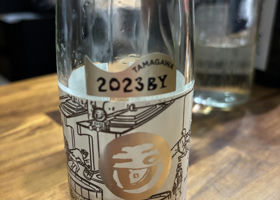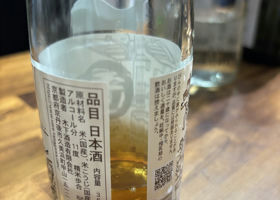

mana
The first thing that catches your eye the moment you pour it into a glass is its color. It is a beautiful golden color, almost like amber. This color is truly surprising for a freshly brewed sake, not an aged sake.
One sip and a rich, mild sweetness reminiscent of molasses, dried persimmons, or ripe dried fruits spreads out slowly. However, the aftertaste is not unpleasant, and it has a sharpness that seems to disappear without a trace. The gap between the two was impressive. Behind the sweetness, there is a firm acidity and umami, which tightens the overall flavor.
In fact, this sake is a modern reproduction based on a production method described in the encyclopedia "Wakan sansai zue," an encyclopedia of the Edo period. The sake is made without yeast, lactic acid bacteria, or other additives, and the koji (malted rice) brewing process takes a whopping 72 hours, while the nama-moto (sake mother) brewing process takes nearly a month. With less brewing water, the hard, heavy mash is fermented slowly over a period of two months. It takes a lot of time and effort to even press the sake. Moreover, the only English toji in Japan, Philip Harper, took on this challenge. The fact that he seriously tried to recreate a 300-year-old recipe and ended up with a magical sake that tastes sweet but has a sharp kick... This is a bottle that makes you love the whole background of the sake.
Japanese>English